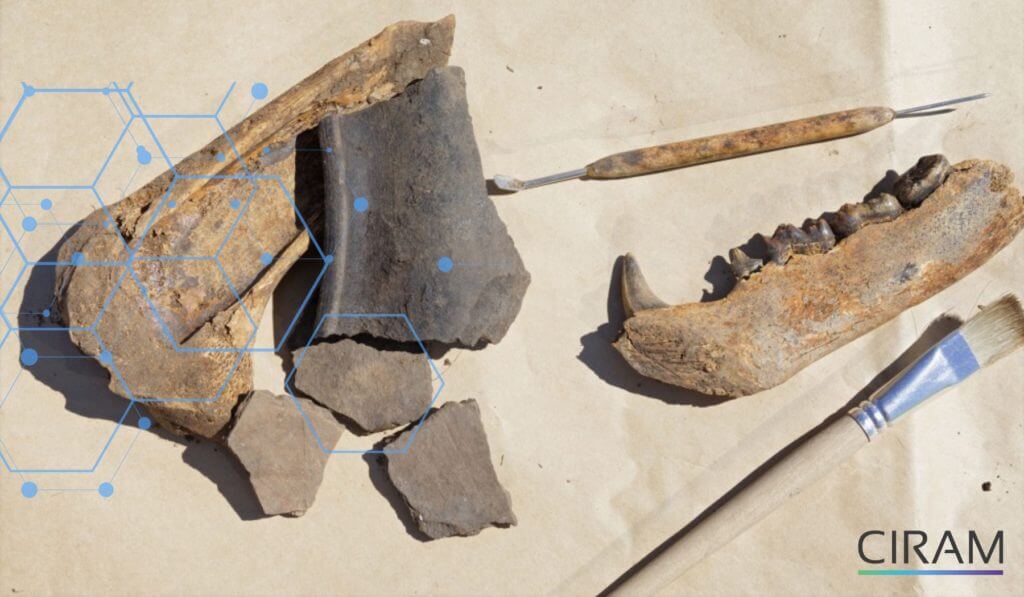Dating of burnt bones
In this article, CIRAM scientists explain the protocol used for Carbon-14 dating of bioapatite.

While Carbon-14 Dating is the ideal method for analyzing bones found in archaeological contexts, the method differs for charred bones or bones found in arid regions or acidic environments.
How do we date bones by Carbon-14?
C14 dating is the most common and effective method for dating all organic material. This technique, developed in the 1940s, relies on the radioactivity of carbon-14 (instability of carbon-14 that changes over time) contained in each organism. Measuring the concentration of carbon 14 makes it possible to determine the time elapsed since the death of a living organism. But if Carbon 14 dating, or radiocarbon dating, is relevant for classical bones, the method differs for burnt bones or bones found in arid environments. Because the latter are damaged, alternative protocols will need to be used to obtain relevant dating.
What is the difference between burned bones and bones?
Conventional” bones contain 10 to 20 th their mass in collagen, whereas burned bones contain almost none, or the collagen has been severely degraded. It is precisely this protein that we analyze during Carbon 14 dating of bones.
